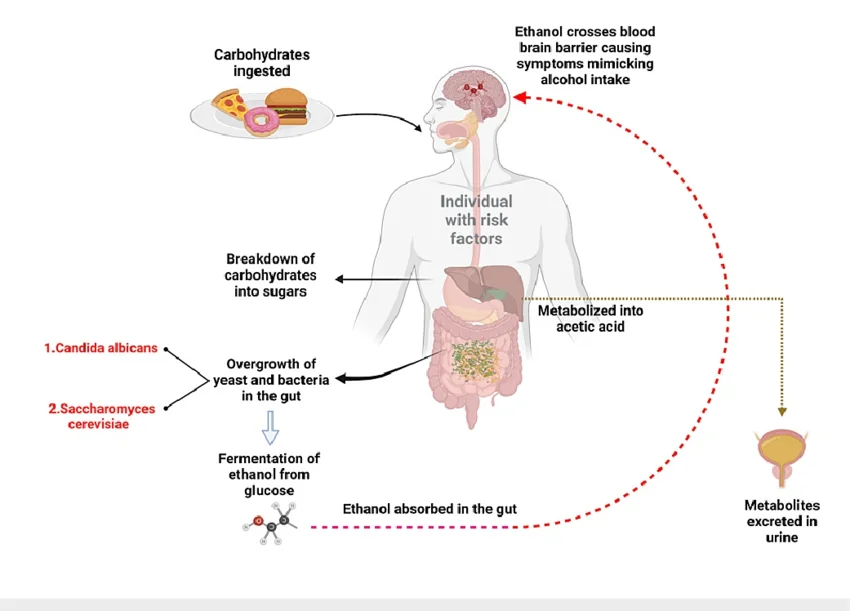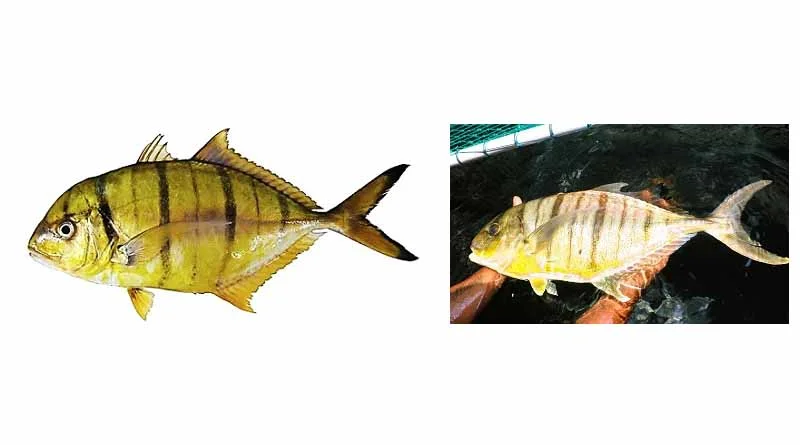GS Paper 2
Marrakesh Agreement
- News: The World Trade Organisation is celebrating 30 years of this agreement.
- Historical Context:
-
- Signed in Marrakesh, Morocco, by 123 countries in 1994 post the Uruguay Round negotiations.
- Led to the establishment of the WTO in 1995, superseding GATT as an international organization.
-
- Features:
-
- Serves as the basic framework for trade relations among all WTO members.
- Includes Most-Favored-Nation (MFN) treatment and National Treatment principles.
- MFN Treatment: Mandates equal trading privileges among WTO members.
- National Treatment: Requires imported goods to be treated no less favorably than domestically produced goods.
- Scope Expansion: Expanded trade discussions beyond goods to cover services, intellectual property, and other relevant topics.
- Modern Multilateral Trading System: Facilitates negotiations, dispute settlement, and economic cooperation among member countries.
- Institutional Framework: Establishes the governance structure of the WTO:
-
- Ministerial Conference: Highest decision-making body.
- General Council: Governing body.
- Specialized Councils: Address specific trade-related issues.
Corporate Sustainability Due Diligence Directive (CSDDD or CS3D)
- News: It is a recently adopted regulation by the European Union.
- Purpose: Recently adopted regulation by the European Union focused on fostering responsible business conduct within the EU.
- Aims to promote responsible behavior among companies operating within the EU or those with significant operations impacting the EU market.
- Objectives and Scope:
- CS3D aims to compel companies, particularly those with substantial EU presence, to identify, prevent, mitigate, and address potential adverse impacts on human rights and the environment across their global operations and value chains.
- Applicability and Criteria:
- Targets companies with over 1,000 employees and €450 million in turnover, ensuring coverage of sizable entities.
- Seeks to hold larger corporations accountable for their impacts on human rights and the environment, aligning with the EU’s commitment to sustainability.
- Implementation and Transition:
- Phased implementation strategy in place to facilitate a seamless transition for affected companies.
- Designed to ensure that companies adapt their practices in line with the CS3D requirements gradually, minimizing disruption to their operations while enhancing sustainability standards.
National Institute for the Empowerment of Persons with Intellectual Disabilities (NIEPID)
- News: The Union Government might introduce a novel diagnostic test crafted by the National Institute for the Empowerment of Persons with Intellectual Disabilities (NIEPID) aimed at identifying Specific Learning Disabilities (SLDs) among adults across India.
- Establishment:
- It was formerly National Institute for the Mentally Handicapped.
- Established in 1984, NIEPID operates as an autonomous body under the administrative jurisdiction of the Ministry of Social Justice & Empowerment.
- Apex Body for Intellectual Disability:
- NIEPID serves as the primary institution in the nation for training, conducting research, and carrying out surveys pertaining to intellectual disabilities.
- Dedication to Quality Services:
- NIEPID is committed to providing high-quality services to individuals with Intellectual Disabilities in alignment with the national interest.
- Headquarters and Regional Centers:
- Located in Secunderabad, Telangana, NIEPID operates regional centers in Kolkata, Navi Mumbai, and Noida, thereby extending its reach and accessibility.
- Comprehensive Empowerment Initiatives:
-
- NIEPID facilitates individuals with intellectual disabilities (Divyangjan) to avail themselves of cutting-edge rehabilitation interventions, educational opportunities, therapeutic support, vocational training, employment assistance, leisure and social activities, sports, cultural programs, fostering their full participation in society.
GS Paper 3
Mission ISHAN (One Nation, One Airspace)
- News: The Airports Authority of India (AAI) recently issued a call for expressions of interest (EoI) to develop a comprehensive project report for Indian Single Sky Harmonized Air Traffic Management at Nagpur (ISHAN).
- Mission ISHAN:
-
-
- Mission ISHAN represents a concerted effort by the Indian government to integrate the nation’s airspace management system.
-
- Current Airspace Structure:
-
-
- Presently, the Indian airspace is segmented into 4 flight information regions (FIRs) – Delhi, Mumbai, Kolkata, and Chennai, along with a sub-FIR at Guwahati.
- Each of these regions operates autonomously.
-
- Centralized Management System:
-
-
- Transitioning to a centralized system holds the promise of facilitating smoother air traffic flow, alleviating congestion, and potentially reducing flight times.
- Such improvements can lead to significant fuel savings and a reduced carbon footprint.
-
- Central Command Center in Nagpur:
-
-
- The central command center for ISHAN is slated to be established in Nagpur, Maharashtra.
-
- Benefits for Airlines and Passengers:
-
- The envisioned centralized system could yield advantages for airlines, such as reduced operational costs, and for passengers, potentially translating into more affordable fares.
Advanced Composite Solar Sail System (ACS3)
- News: NASA recently confirmed that its Advanced Composite Solar Sail System has been successfully deployed.
- Technology Demonstration Mission: Developed by NASA, ACS3 aims to assess the feasibility of utilizing solar sails for propulsion in deep space.
- Compact CubeSat Design: Launched on April 23, 2024, ACS3 is a CubeSat, comparable in size to a toaster oven, featuring a deployable sail of substantial dimensions, akin to a small apartment.
- Innovative Lightweight Construction: Utilizing carbon fiber sail booms instead of conventional metal booms, ACS3 optimizes weight reduction for enhanced performance.

- Solar Sail Propulsion:
- Utilization of Sunlight Pressure: The spacecraft relies on the pressure exerted by sunlight on its reflective sail to generate forward thrust, eliminating the need for conventional propellant.
- Limitless Propulsion Potential: Unlike chemical rockets constrained by finite propellant, solar sails leverage sunlight, offering virtually limitless propulsion capabilities. This characteristic enables solar sails to reach destinations significantly farther than achievable by chemical rockets.
- The Solar Sailing Mechanism:
- Harnessing Photon Momentum: Light comprises photons, which lack mass but possess momentum.
- Reflective Surface Interaction: As sunlight reflects off the shiny surface of the solar sail, it imparts a portion of its momentum, resulting in a gentle push on the sail.
- Continuous Thrust Generation: Although each push is subtle, the cumulative effect over time provides greater thrust compared to traditional chemical rockets, enabling efficient propulsion for extended durations.
Membranous Nephropathy (MN)
- News: Researchers from Kerala reported 15 cases of Membranous Nephropathy (MN) linked to the regular application of fairness creams.
- Autoimmune Kidney Disease:
-
- MN is an autoimmune disorder characterized by nephrotic syndrome, marked by excessive protein excretion in urine (proteinuria), eventually leading to renal failure.
- The body’s immune system targets the glomeruli, small kidney filters responsible for eliminating waste from the blood, impairing their function.
-
- Symptoms: Manifestations of MN include proteinuria (protein in urine), edema (swelling in legs and ankles), fatigue, high blood pressure, and foamy urine.
- Treatment: Treatment typically involves medication and dietary modifications to manage symptoms and slow disease progression.
- Mercury in Fairness Creams:
- Toxic Heavy Metal Usage: Mercury, a highly toxic heavy metal, is incorporated into fairness/anti-aging creams for its ability to inhibit melanin formation, resulting in skin lightening.
- Direct Proportionality: The efficacy of skin lightening is directly correlated with the mercury content in these creams.
- Absorption and Systemic Toxicity: Mercury in creams can permeate the skin via sweat glands, sebaceous glands, and hair follicles, leading to systemic toxicity, notably affecting the kidneys and nervous system.
- Adverse Health Effects: Adverse effects of mercury exposure include skin discoloration, scarring, increased susceptibility to bacterial and fungal infections, as well as psychological manifestations such as anxiety, depression, psychosis, and peripheral neuropathy.
- International Regulatory Framework:
- Minamata Convention on Mercury:
- India, as a signatory to the Minamata Convention on Mercury, is committed to a global treaty aimed at safeguarding human health and the environment from anthropogenic mercury emissions and releases.
- The convention has been in effect since 2017.
- Minamata Convention on Mercury:
Auto-Brewery Syndrome
- News: A Belgian man was recently acquitted of drunk-driving because he had auto-brewery syndrome (ABS).
- Alternative Names and Definition: ABS, also referred to as gut fermentation syndrome or drunkenness disease, is a rare metabolic disorder characterized by the fermentation of carbohydrates in the gut, resulting in alcohol production.
- Alcohol Production in the Body: The condition involves the internal fermentation of carbohydrates within the gastrointestinal tract, leading to the production of alcohol as a metabolic byproduct.

- Intoxication Symptoms without Alcohol Consumption: ABS can induce symptoms of intoxication even in the absence of alcoholic beverage consumption, posing a diagnostic challenge.
- Underlying Causes: It is believed to be associated with an overgrowth of specific yeasts or bacteria within the gut microbiome.
- Symptoms:
-
- Symptoms of ABS mimic alcohol intoxication, including dizziness, headache, and dehydration, despite abstaining from alcoholic drinks.
-
- Increased Risk Factors:
-
- Individuals with diabetes, obesity, and Crohn’s disease are predisposed to ABS; however, it can also affect otherwise healthy individuals.
-
- Dietary Management:
-
- Managing ABS often involves dietary modifications, with medical recommendations suggesting the avoidance of high-carbohydrate and high-sugar foods to mitigate symptoms and alcohol production.
-
Read also – Climate Engineering and Solar Geoengineering: Types, Techniques and Challenges
Climate Technology Centre and Network (CTCN)
- News: The Climate Technology Centre and Network (CTCN) recently marked its 10-year anniversary.
- Establishment and Role:
-
-
- Established in 2014, the CTCN serves as the implementation arm of the Technology Mechanism under the United Nations Framework Convention on Climate Change (UNFCCC).
-
- Functions and Responsibilities:
-
-
- Promoting Technology Transfer: Facilitates the transfer of environmentally sound technologies aimed at fostering low-carbon and climate-resilient development.
- Supporting Developing Countries: Assists developing nations in identifying, designing, and adapting these technologies to address their specific requirements and challenges.
-
- Headquarters: Based in Copenhagen, Denmark, the CTCN is hosted by the UN Environment Programme.
Golden Trevally Fish
- News: The Central Marine Fisheries Research Institute (CMFRI) has announced a breakthrough in captive breeding of the high-value marine fish golden trevally.
- Golden trevally, also known as golden kingfish, exhibits rapid growth rates and offers high-quality meat, making it an attractive option for aquaculture ventures.
- Distinctive Appearance:
-
-
- Identified by its yellowish belly, scattered black patches, yellow fins, and black tail, the golden trevally is sought after for its visually appealing appearance.
-
- Habitat and Distribution:
- Primarily found in reef area fishing grounds along the coasts of Tamil Nadu, Puducherry, Kerala, Karnataka, and Gujarat.

Antihistamines
- News: There has been a rise in the usage of antihistamines to address various health issues.
- Antihistamines: Common Over-the-Counter Drugs: These are readily available drugs used to alleviate short-lived allergic reactions, such as sneezing fits or itching, and are often purchased without a prescription.
- Mechanism of Action:
-
- Antihistamine drugs function by interacting with histamine receptors, which are proteins that bind to histamine compounds in the body.
-
- Composition:
-
- Comprised of ethylamine and imidazole, with the latter forming a ring structure within the compound.
-
- Functions of Histamine:
-
- Histamine exerts its effects through four main types of receptors: H1, H2, H3, and H4.
- H1 Receptors: Predominantly located in blood vessels, neurons, and smooth muscle cells, aiding in the management of minor allergies when blocked by antihistamines.
- H2 Receptors: Found in gastric gland cells, stimulating the release of gastric acid to facilitate digestion.
- H3 Receptors: Present in the central nervous system, regulating the release of neurotransmitters like dopamine and serotonin.
- H4 Receptors: Control the body’s inflammatory response, including allergic reactions.
-
- Current Research Focus: Ongoing research is concentrated on developing specialized drugs that target H3 and H4 receptors to address neurological and immunological disorders effectively.
Liquid Nitrogen
- News: Following the viral video depicting a boy experiencing intense pain after consuming a ‘smoking’ biscuit, the Food Safety department has taken action by issuing an order regarding the utilization of liquid nitrogen.
- Physical Characteristics:
-
- Colorless and Odorless: Liquid nitrogen possesses these properties, making it visually indistinguishable and odor-free.
- Non-Flammable and Non-Corrosive: It is non-flammable and non-corrosive, ensuring safety during handling and storage.
- Extreme Cold: Existing at an extremely low temperature of −196 °C, it is among the coldest substances known.
-
- Composition and Production:
-
- Inert Cryogenic Fluid: Liquid nitrogen is an inert cryogenic fluid formed by compressing and cooling nitrogen gas below its evaporation point.
-
- Applications:
-
- Food Industry: Utilized for freezing and transporting food products, maintaining their quality and freshness.
- Cryopreservation: Employed in cryopreservation techniques to preserve biological samples such as sperm, eggs, embryos, and tissues.
- Medical Applications: Used in medicine for procedures like cryotherapy to remove warts, moles, and other skin lesions.
-
- Harmful Effects:
-
- Skin and Eye Damage: Rapid freezing of skin tissue and eye fluid can occur, leading to cold burns and frostbite upon contact with liquid nitrogen.
- Inhalation Hazards: Inhalation of liquid nitrogen can cause damage to the lungs, posing serious respiratory risks if not handled with caution.
-
Facts for Prelims
Global Education Monitoring Report
- Annual Publication: Initiated in 2002, the UNESCO Global Education Monitoring Report is an annual publication by the United Nations Educational, Scientific and Cultural Organization (UNESCO).
- Purpose and Objectives:
-
- The report serves as a comprehensive, analytical, and authoritative resource for the global follow-up and review of education progress.
- Each year, the report centers on a specific theme pertinent to the achievement of Sustainable Development Goal 4 (SDG 4), which focuses on “Quality Education.”

